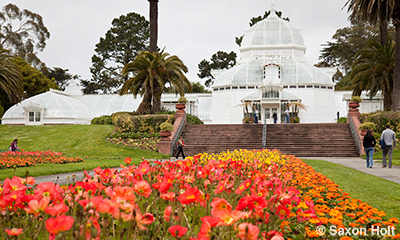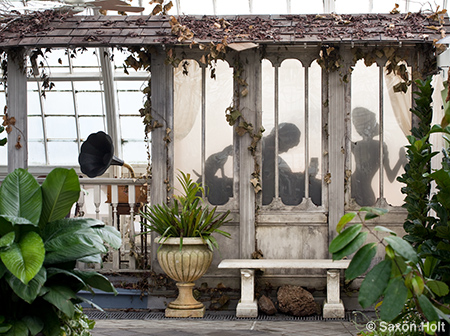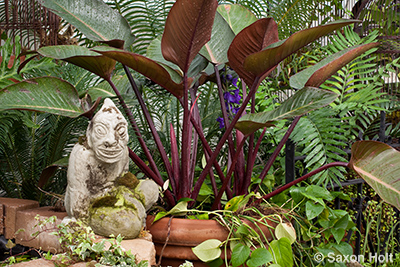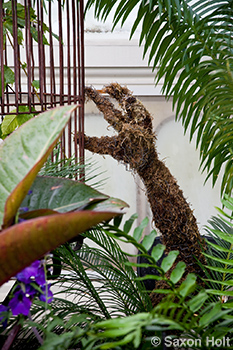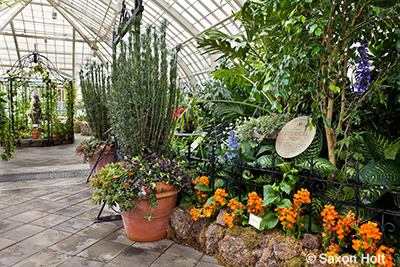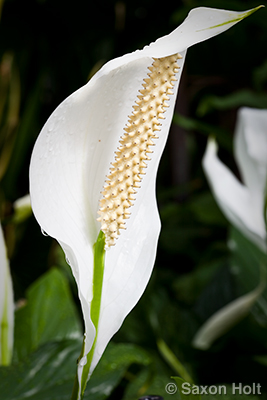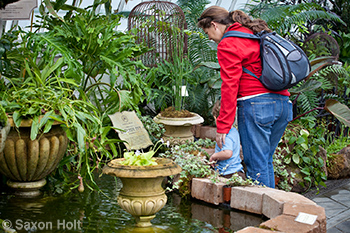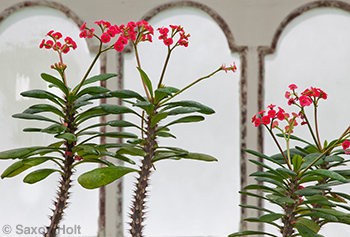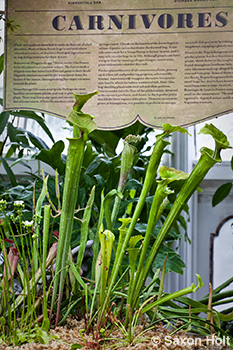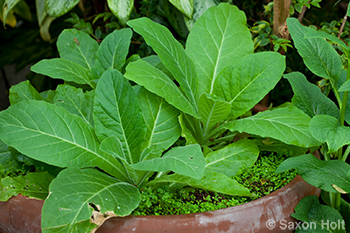It is a grand thing when plants become the subject of an exhibit. I don’t mean in the beds of a botanic garden or decorating a designer’s display at a flower show, but an honest to goodness exhibition, in this case ‘Wicked Plants’ at The Conservatory of Flowers in San Francisco’s Golden Gate Park.
Too often we only think of plants as wild things tamed to suit our needs, either aesthetic or utilitarian. Gardeners know the reality – that our gardens go wild beyond our control; but never-the-less we rarely think of going to an exhibit of plants – indoors. Well, we should. Plants are as amazing as any art form, and as intriguing as any science exhibit. Now we plant lovers have a fun show of plants based on the book ‘Wicked Plants’ by Amy Stewart.
Inside San Francisco’s grand Victorian Conservatory, the exhibit hall has become the Victorian backyard of a devious murderess.
That is how exhibit designer Lau Hodges decided to stage the exhibit, though she was actually inspired by the “creepy” Highgate Cemetery in London. So the murderess’ backyard became a lush collection of gargoyles, moss covered statues, and wicked plants. Every plant in the exhibit, whether in Stewart’s book or not, is poisonous.
Lau thought the cemetery motif might be too overtly scary for children, thus the backyard, but there are plenty of little details that bring some creep into the room, such hands reaching out of the earth and a sound design that creaks and moans.
But the plants are the stars – or demons. If you read Stewart’s book, which has the full title of Wicked Plants: The Weed That Killed Lincoln’s Mother and Other Botanical Atrocities, you will find dozens of stories about the dark side of plants. “I confess that I am enchanted by the plant kingdom’s criminal element.” says Stewart who spent many hours working with the Conservatory in planning the exhibit.
Certain of the more criminal plants, such as those that provide cocaine (Erythroxylum coca) or Strychnine (Strychnos nux-vomica), were simply off limits and the City would not grant a permit for the exhibit. Others were surprisingly hard to find. “Hemlock is the one that mocked me” says Lau, who after spending days negotiating with the Golden Gate National Recreation Area for a permit to collect this wild weed, found it growing behind a greenhouse at the Conservatory.
Other plants, such as the Peace Lily (Spathiphyllum wallisii) one would not think of being poisonous but it gets more calls than any other to poison control centers, perhaps because it is such a popular house plants and is also toxic to animals. “If I learn anything from my own exhibit”, says Lau, “it’s – don’t kill your cat”.
The Conservatory staff has taken precautions and training on poison treatment but has never had any problem with visitors eating plants at other exhibits. Still, the more dangerous ones are cleverly enclosed in Victorian bird cages, and of course parents are encouraged to watch their children.
Each has a story and there are serious lessons to be learned. Euphobias, for instance have become common garden plants but are quite toxic and should not be planted where children might snap the stems and end up with serious rashes.
The exhibit literally makes the book and the stories come to life. The signage in the exhibit is taken directly from the book and plants are well marked, but it is the plants themselves that are the show. And really, this is why we have Conservatories – to put plants on exhibit. Think of them as performance art. Gardeners, of all people, should recognize the value of Conservatories. Go, support them.
The Wicked Plants show at the Conservatory of Flowers in San Francisco runs through October and is likely to get better as the plants get bigger. For our GGW readers who get to San Francisco, you will get $2 off the admission by mentioning Gardening Gone Wild.
By mid summer, the most deadly plant of all should be big, smelly, and sticky:
The most notorious plant of all ? …. Go see the plants at the exhibition. Or read the book …

